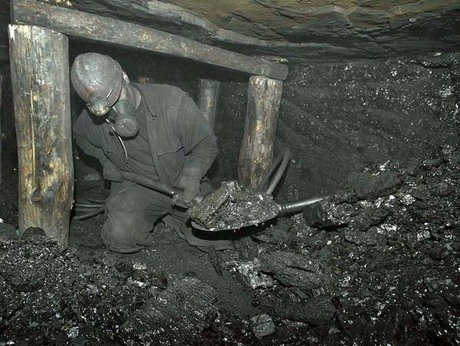Just before the summer recess Ukraine’s parliament voted to throw more money into state-owned mines. On top of the Hr 7.8 billion ($975 million) set aside in this year’s budget, miners will get another Hr 5.5 billion in taxpayer money, bringing the total subsidy to over a third of the planned budget deficit this year.
None of it will be used to modernize outdated mines, though. Instead, it will be spent on “partial covering of production costs.” In other words, to pay salaries and electricity bills in government-owned mines. But experts say it won’t slow down the industry’s crisis and note that a new policy is necessary.
Ukraine has just over 100 state mines. They lost Hr 7.2 billion in the first half of the year, according to an Energy Ministry report released this month. That’s 38 percent more than in the same period in 2012.
In just half a year the miners spent money “allotted for up to November,” the head of the Independent Trade Union of Miners Mykhailo Volynets told the Kyiv Post.
Energy expert Dmytro Marunych calculated that in 2010-2012 Ukraine spent Hr 23 billion to plug the deficit in the mining sector, but only Hr 6 billion was spent on modernization of mines, most of which use equipment and technologies that are long obsolete.
This is one of the reasons for a fall in coal production. In money terms, state mines produced Hr 4.6 billion less coal in half a year than at the same period of 2012, a 16 percent drop. Despite lower production volumes, in 2013 the industry is set to receive more money than last year.
Ukraine’s mines sell their coal at Hr 503.4 per ton, a price set by the government though an opaque scheme. At the same time, the cost of production stood at Hr 1,400 per ton in the first half of 2013.
State mines are extremely inefficient, too. There are 145 licensed mines in Ukraine, of which about 100 are state-owned. Yet their total output stands at 29 percent of the total production, according to a report by DTEK, the energy holding owned by Ukraine’s richest man Rinat Akhmetov. By comparison, DTEK’s own 28 mines account for 46 percent of Ukraine’s total coal production.

Volynets says partly the discrepancy in efficiency is due to the fact that the most promising mines have long been privatized or rented. But there are other reasons, too.
“There are objective reasons, such as geological and mining conditions. Ukraine extracts coal from the largest depths in the world, but we also have one of the thinnest layers in the world, outdated and worn equipment. Basic stationary equipment is worn by 70 percent,” Volynets said.
Yevhen Tymoshenko, who heads risk management at international law firm Integrites, says that state mines also have to compete against successful private mines and illegal mines, known as kopanky, or dug-up holes.
“The result of their work forms a certain acceptable market price. In fact, this price grows slower than the primary cost on state coal mines,” Tymoshenko says. He also says that coal from private mines costs much cheaper to produce, about Hr 600 per ton.
State mines are also becoming more dangerous for miners, but their improvement is not on the agenda because management lacks motivation: they receive state subsidies regardless of any factors.
Tymoshenko says some mines employ financial tricks to get higher compensation, like overstating production costs.
To add to all other headaches, the industry produces more coal than is needed by their clients – a problem that is exacerbated by illegal mining, Volynets says.
“In April more than 5 million tons of (surplus) coal was stocked in warehouses. Now the range is the same, but the quality deteriorates to the point that it won’t be of any use,” says Volynets. He says this is particularly true for the types of coal used to produce energy, which turns into ashes in a few months.
Volynets says 200,000 tons of coal from the warehouses of Makiyivvuhillya state holding, which owns eight mines, were recently decommissioned.
The government’s stubborn support of the loss-making industry is now threatening the country’s balance of payments, eroding its chances to become more competitive year by year.
Tymoshenko says the obvious solution would be to close down non-performing mines and privatize others, the way Russia did in 1994-1998. Money from privatization, as well as cash from international financial institutions, can be spent on retraining workers and paying temporary unemployment benefits in many areas in Donetsk and Luhansk oblasts, where mines remain the only way to make a living.
Kyiv Post staff writer Kateryna Kapliuk can be reached at [email protected].
